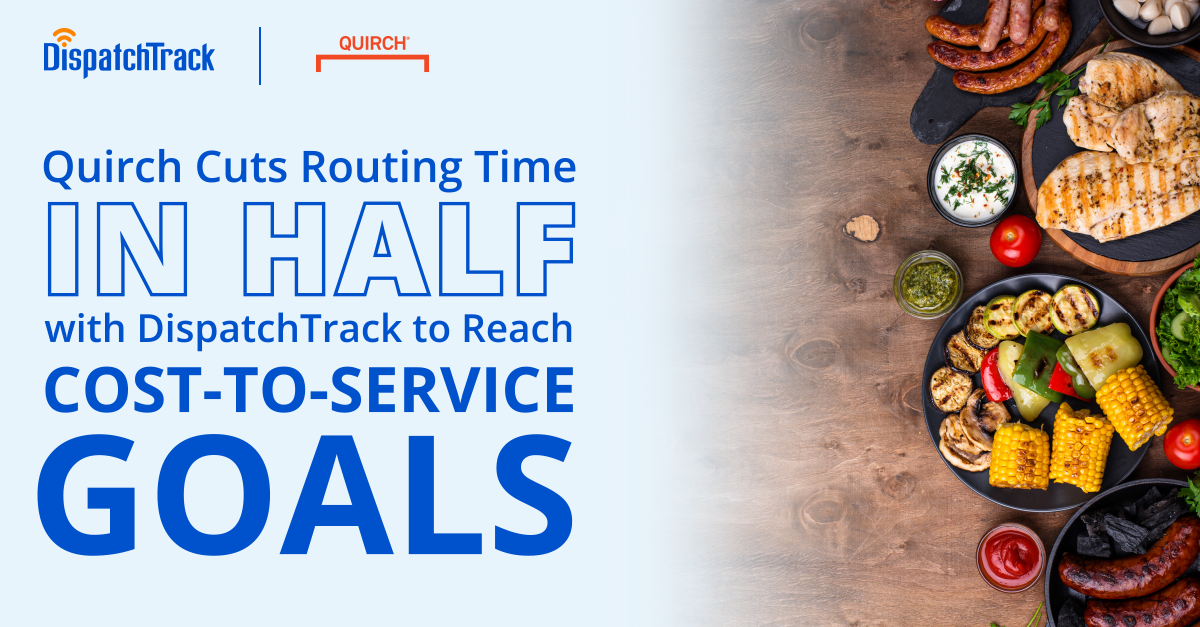Making a new software investment can be a big decision—especially if you’re in an extremely customer-centric area like field services, where any potential interruption of service could be a real issue. Even when your logistics processes aren’t as smooth or as adaptable as you’d like them to be, you have to weigh any upgrades against the challenges of change management and the potential costs associated with switching to a new provider.
 With route optimization software, the calculus is even harder. Route-based businesses rely on their ability to plan routes that will keep their customers happy, and disrupting the way you do that can feel especially risky. At the same time, efficient routing is a stumbling block for many businesses that offer uniform and linen services, landscaping, sanitation supply deliveries, etc. Where do you draw the line at which the benefits outweigh the risks?
With route optimization software, the calculus is even harder. Route-based businesses rely on their ability to plan routes that will keep their customers happy, and disrupting the way you do that can feel especially risky. At the same time, efficient routing is a stumbling block for many businesses that offer uniform and linen services, landscaping, sanitation supply deliveries, etc. Where do you draw the line at which the benefits outweigh the risks?
It’s an important question—and it’s exactly what we’ll try to suss out in this post.
You Think Your Routes Could Be More Efficient
One of the most common feelings among businesses who’s route optimization isn’t getting the job done is that they should be able to do more with the capacity they already have. To take on new business, operators in this position find themselves buying new trucks or contracting more deliveries to third parties, even if their trucks aren’t always running at maximum capacity. This isn’t just hugely frustrating—it’s also a sign that it may be time to upgrade your routing technology.
Here, most field service businesses will need to look for a hybrid of static and dynamic routing software. Assuming that you make recurring stops to many of your customers every week, updating your field service scheduling software to be purely dynamic would throw your delivery plans into chaos. At the same time, purely static routing doesn’t give you the ability to easily respond to new orders, changing customer needs, etc. By combining the two in a hybrid model, you avoid the chaos without having to sacrifice route efficiency—resulting in more stops per truck per route, greater route density, and more efficient field services overall.
It’s Hard to Quantify Stop Profitability
Another key indicator that your technology needs to be modernized is closely related to routing: route and stop costing. Any route-based business wants to ensure profitable stops, but it’s all too common to find businesses whose routes and schedules are so complex—and whose data is so siloized—that it’s almost impossible to tell which stops are profitable and which aren’t. It’s not hard to imagine the way that this opacity into something as basic as delivery costs could hamper your attempts to optimize your service to customers.
Simply put, your technology should be able to do this for you. We don’t mean to minimize the complexity of getting this right—but it really is critical to success, and it’s something that your service management platform should theoretically be gathering the necessary data to do easily. Accurate delivery costing can set the stage for much more comprehensive efficiency improvements and give you the tools to balance efficiency with customer service—in that way, you’re not so much investing in a particular technology solution as you are laying the groundwork for digital transformation.
Your Delivery Data Is Siloed
We alluded quickly to data silos in the section above, but they’re worth talking about on their own. Why? Because their existence is a surefire indicator that it’s time to pivot to more connected technological solutions.
After all, field service appointments don’t happen in a vacuum. Whether you’re dropping off a linen delivery or headed to a landscaping appointment, each job is part of a holistic process. You want to provide great customer service across the spectrum that lets your customers know that you offer a lot more than just dropping off clean uniforms—and you want to roll out supply chain practices that are efficient and sustainable from the perspective of your entire business.
This requires data to be shared easily between systems, and many legacy solutions simply don’t make that easy enough to support your goals. If you’re struggling with data silos around field service scheduling, look for SaaS-native technology solutions with a track record of powering easy integrations with other enterprise-caliber solutions.
Reroutes Take an Eternity
You don’t get to be a successful field services enterprise without resilience. No business process ever goes off without a hitch from day one, and success often comes from finding a way to work with what you have. Oddly, it’s this tendency to make it work even when conditions aren’t ideal that slows businesses down when it comes to upgrading legacy systems that aren’t getting the job done anymore. Sure, their technology may not make it easy to route—but routers and dispatchers have been finding a way to make it work, and they’ve accumulated the know-how and domain knowledge to work around the fact that actually performing a reroute is a slow, painful, incredibly complex process.
But just because you can get by with slow routing and rerouting doesn’t mean that you have to. Even if you’ve found ways to work around the kinds of limitations that slow, complex legacy routing systems impose, you’re still missing out on the potentially transformative impacts of fast, adaptive, easy-to-use route optimization.
Let’s take a hypothetical: imagine you’re a sanitation supplies distributor, and one of your sales reps has just closed a big new account who are requesting three deliveries per week. They may have specific times that work for them, or they may offer rough guidance (“we need our deliveries before lunch on Wednesday but any time on Fridays” e.g.), but either way you have to figure out how you’re going to service them:
- In a world where creating a new set of routes requires months of planning, you’re going to finagle the new customer into existing routes however you can. You might bump some smaller customers to different routes to make room, or you may have enough spillover that you have to buy a new truck or van to run another route. Either way, every change you make has a cascade effect that takes you further and further from the kind of dense, efficient routes that you want.
- If you can build new routes and run reroutes in a matter of minutes, on the other hand, all of the guesswork vanishes. You test out a few potential routing scenarios, choose the one that works best for you, and roll out your new routes without creating awkward stops that test the limits of your capacity. When new changes come down the pike, you run another reroute and update accordingly—keep new and old customers happy without ever losing out on route efficiency.
To put it another way, by investing in faster reroutes, you’re able to multiply the power of any investments you’ve made in route efficiency and density.
Your Current Field Service Routing Software Is Too Difficult to Use
Sometimes efficient reroutes are impossible because the underlying technology is too slow to make it easy—sometimes rerouting is a challenge simply because of the user interface of the field service scheduling app. The same goes for tasks like territory planning that also involve complex parameters. If you need to bring in a team of outside consultants just to use your own field service routing and management software, you’re setting yourself up for unnecessary challenges.
Intuitive UX isn’t just a nice-to-have these days. Increasingly, it’s a practical necessity for making sure your teams can actually get the most out of the functionality you’re paying for. The greater the capabilities your solution offers, the more value you get out of ensuring that your staff can actually leverage those capabilities to the fullest. If your current solution doesn’t make it easy to adjust routes, visualize cost projections, create sales territories, communicate with customers and drivers, and find the right data at the right time, it might be time to invest in a solution that does.
